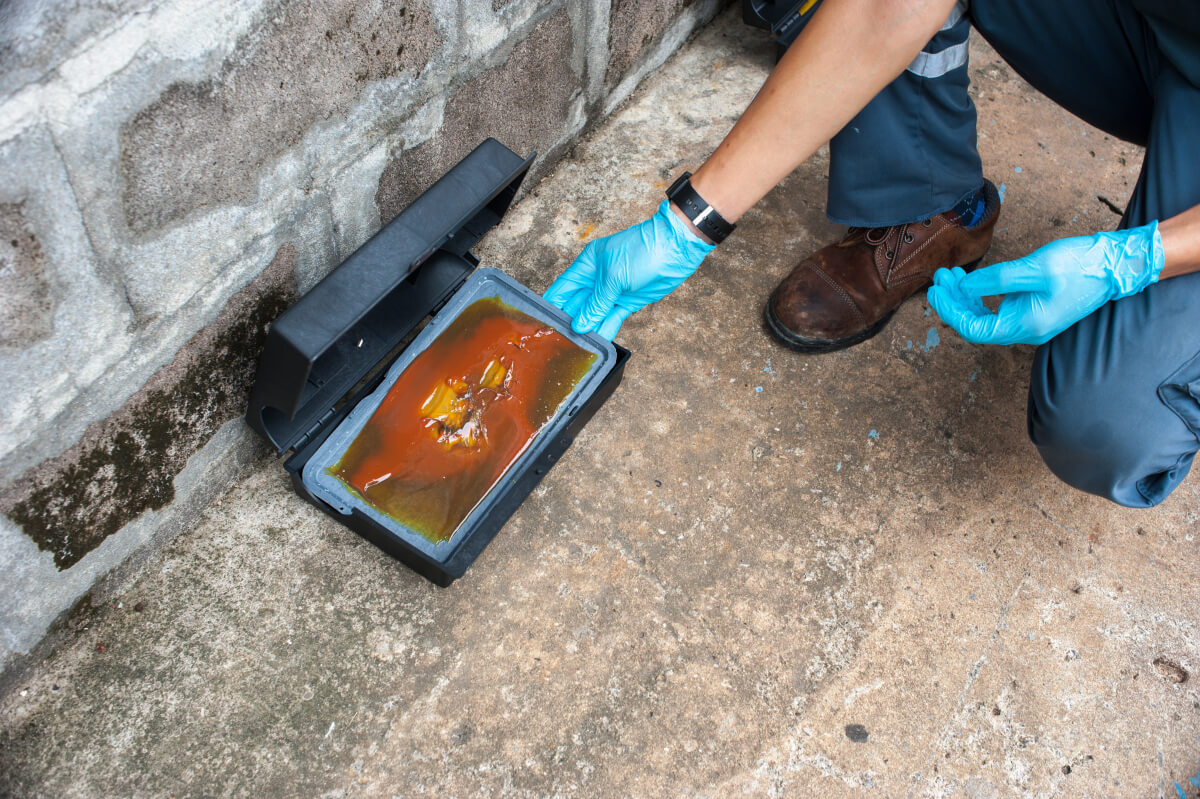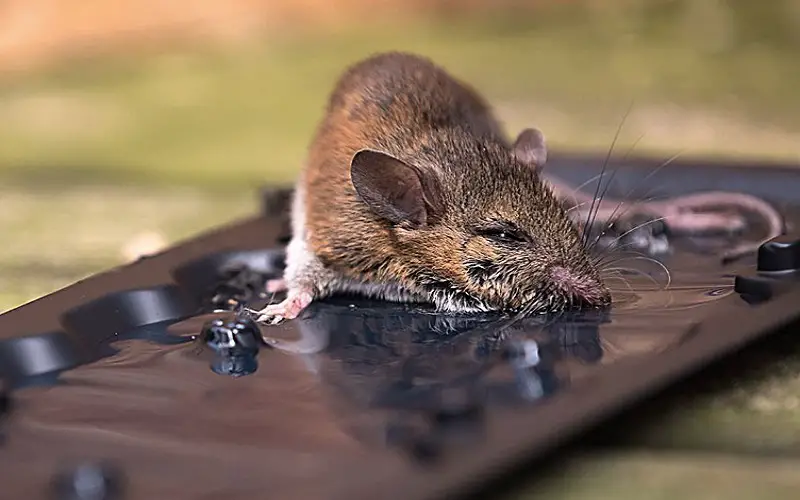Glue traps can attract mice due to the scent and pheromones used to lure them. The sticky surface then captures the mice as they investigate the trap.
Glue traps are designed to entice mice into the adhesive surface, making them an effective method for catching rodents. However, it’s essential to consider the ethical implications and potential cruelty of using glue traps, as they can cause distress and suffering to the mice.
In addition, there are alternative methods available for addressing a mouse infestation that may be more humane and effective in the long run.
Contents
Introduction To Glue Traps
Glue traps are commonly used to catch mice, but do they actually attract them? Glue traps work by luring mice with the scent of food or pheromones, making them curious enough to investigate.
However, it’s important to note that glue traps alone may not be enough to attract mice without the presence of enticing bait or attractants.

The Attraction Factor
When it comes to dealing with a mouse infestation, using glue traps is a popular choice for many homeowners. However, there is a common misconception that glue traps attract mice.
In this section, we will explore the attraction factor of glue traps and whether they actually entice mice to approach.
Ingredients In Glue Traps
Glue traps are typically made with a sticky adhesive that is designed to ensnare mice upon contact. The adhesive is often supplemented with attractants such as food-based scents or pheromones to lure mice towards the trap.
Scented Vs. Unscented Varieties
Some glue traps are scented to appeal to a mouse’s sense of smell, while others are unscented. The scented varieties may contain attractants such as peanut butter, cheese, or other food scents to entice mice, while unscented traps rely solely on the adhesive to capture rodents.
Behavioral Patterns Of Mice
Mice exhibit different behavioral patterns, including foraging, nesting, and exploring. Glue traps may attract mice due to the scent of the adhesive, but they can also cause distress and suffering for the animals. It’s important to consider humane alternatives for pest control.
Foraging Habits
Mice are nocturnal creatures with highly developed senses. They forage for food at night in areas with minimal human activity. Mice tend to explore their surroundings cautiously to avoid danger.
Attraction To Novel Objects
Mice are curious and drawn to new objects in their environment. Novel items like glue traps can intrigue mice and attract them. Their innate curiosity often leads them into unfamiliar situations.
Effectiveness Of Glue Traps
Mice infestations can be a nuisance, and finding an effective way to deal with them is essential. One popular method used by homeowners and pest control professionals is the use of glue traps. These traps are designed to attract mice and capture them using a strong adhesive.
Capture Rates
The effectiveness of glue traps in capturing mice can vary depending on various factors. One of the key factors is the placement of the traps. Placing them in areas where mice are known to frequent, such as along walls or near entry points, can significantly increase the capture rate.
Another important factor is the quality of the glue trap itself. High-quality traps with a strong adhesive are more likely to effectively capture mice. It is recommended to choose traps that are specifically designed for mice, as they are formulated to be more enticing to these rodents.
However, it is important to note that capture rates may vary from trap to trap and from one infestation to another. Some mice may be more cautious or have learned to avoid traps, which can affect the overall effectiveness.
Comparison With Other Traps
When comparing glue traps with other types of traps, it is important to consider their advantages and disadvantages. One advantage of glue traps is that they are easy to set up and require no bait. They can be placed discreetly and are suitable for use in various areas of the house.
On the other hand, glue traps may not be as effective as snap traps or electronic traps in terms of capturing and killing mice quickly. Snap traps, for example, provide a swift and humane method of trapping mice, whereas glue traps can sometimes prolong the suffering of the captured mouse.
Additionally, glue traps may not be suitable for outdoor use as they can become less effective in humid or wet conditions. It is important to consider the specific needs of your situation and consult with a pest control professional if necessary.
In conclusion, glue traps can be an effective method for capturing mice, but their success rate may vary depending on various factors. By understanding the capture rates and comparing them with other trap options, you can make an informed decision on the best approach to deal with a mouse infestation.
Ethical Considerations
Glue traps raise ethical considerations as they are inhumane and cause suffering to mice. However, these traps can attract mice due to the presence of food or scent. It is important to explore more humane alternatives to deal with rodent infestations.
Humane Pest Control
When it comes to pest control, the use of glue traps can be a controversial topic. While they are effective in catching mice, the question remains: are they ethical?
As humans, we have a responsibility to treat all living creatures with respect and kindness, even those we consider pests. It’s important to consider humane pest control methods that don’t cause unnecessary harm or suffering to the animals.
Controversies Surrounding Glue Traps
Glue traps have been a source of controversy in the pest control industry for many years. While they are marketed as a humane alternative to traditional snap traps, they can actually cause more harm to the mice they catch.
Once stuck to the trap, the mouse will often struggle to free itself, resulting in broken bones, torn skin, and even death. Additionally, glue traps can also catch non-target animals, such as birds, snakes, and even pets.
When considering the use of glue traps, it’s important to weigh the ethical considerations. While they may seem like a quick and easy solution, the harm they can cause to animals is not worth it.
Instead, consider alternative methods such as live traps or exclusion techniques that prevent mice from entering your home in the first place. By taking a more humane approach to pest control, we can ensure that we are treating all living creatures with the respect they deserve.
Enhancing Trap Attractiveness
Enhancing trap attractiveness involves using scents or food to lure mice into glue traps effectively. Glue traps attract mice by offering a tempting scent or food source, increasing the chances of successful trapping.
Using Bait With Glue Traps
One effective way to enhance the attractiveness of glue traps is by using bait. Bait serves as an irresistible lure for mice, increasing the chances of them getting trapped. When selecting bait for glue traps, it is important to choose options that are highly appealing to mice.
Some common types of bait that can be used with glue traps include:
- Peanut butter: The strong scent and sticky texture of peanut butter make it an excellent choice for attracting mice to glue traps.
- Chocolate: Mice are known to have a fondness for chocolate. Placing a small piece of chocolate on the glue trap can entice them to approach and ultimately get stuck.
- Seeds and nuts: Mice are naturally attracted to seeds and nuts, making them a reliable bait option to enhance trap effectiveness.
Placement Strategies
The placement of glue traps is crucial for maximizing their effectiveness. It is important to strategically position the traps in areas where mice are likely to traverse.
Consider the following placement strategies:
- Identify mouse activity areas: Look for signs of mouse activity such as droppings, chewed wires, or gnawed furniture. These areas indicate high mouse traffic and are ideal spots for trap placement.
- Along walls and corners: Mice typically prefer to travel along walls and corners, as it provides them with a sense of security. Placing glue traps in these areas increases the chances of capturing them.
- Near entry points: Mice often enter homes through small cracks, gaps, or openings. Placing glue traps near these entry points can intercept mice before they have a chance to infiltrate your living space.
- Multiple trap placement: To increase the likelihood of catching mice, it is advisable to set up multiple glue traps. Spreading them out across different areas can help cover more ground and improve the chances of successful trapping.
By using bait and implementing strategic placement strategies, you can significantly enhance the attractiveness of glue traps.
Remember to monitor the traps regularly and dispose of any trapped mice in a humane manner. With these techniques, you’ll be well on your way to effectively dealing with unwanted mouse infestations.
Prevention And Long-term Solutions
When it comes to dealing with mice infestations, prevention and long-term solutions are key. By implementing effective strategies, you can reduce the likelihood of mice being attracted to your property and minimize the need for reactive measures.
Sealing Entry Points
Sealing potential entry points is essential in preventing mice from gaining access to your home. Conduct a thorough inspection of your property to identify any gaps, cracks, or openings that could serve as entry points for mice. Seal these openings using steel wool, caulk, or foam insulation to effectively block off access.
Environmental Modifications
Make environmental modifications to deter mice from your property. Ensure that food sources are properly stored in airtight containers, and promptly clean up any spills or crumbs that could attract mice.
Additionally, consider the strategic placement of repellents such as peppermint oil or ultrasonic devices to discourage mice from entering your living spaces.
Alternatives To Glue Traps
Glue traps are known for their inhumane nature and can often be ineffective in catching mice. Fortunately, there are alternative methods that are both humane and efficient in dealing with rodent infestations. Here are some alternatives to glue traps that you can consider:
Live Traps
Live traps provide a humane way to capture mice without causing them harm. They work by luring the mice into a container from which they cannot escape. Once caught, you can release the mice into the wild far away from your home.
Electronic And Snap Traps
Electronic and snap traps are designed to swiftly and humanely kill mice. Electronic traps deliver a quick shock, while snap traps utilize a spring-loaded bar to swiftly dispatch the rodent. Both are effective and more humane than glue traps.
Frequently Asked Questions
Do Mice Know To Avoid Glue Traps?
Mice don’t inherently know to avoid glue traps. They may get caught if they come into contact with them.
How Fast Do Glue Traps Attract Mice?
Glue traps attract mice quickly, usually within a few hours to a couple of days.
How Effective Are Glue Traps For Mice?
Glue traps are effective for mice, capturing them without poison. They are easy to use and dispose of.
Do Mice Scream On Glue Traps?
Yes, mice can scream on glue traps. When they get stuck, they become distressed and may emit high-pitched squeaks that can sound like screaming. It’s a cruel and inhumane way to catch mice and there are more humane methods available.
Conclusion
After conducting thorough research, it’s clear that glue traps do attract mice, but they may not be the best solution for controlling an infestation. There are more humane and effective methods available, such as snap traps or live traps.
It’s important to consider the consequences of using glue traps, such as causing unnecessary suffering for the mice and potentially creating a health hazard. It’s best to explore all options and choose the most appropriate method for your specific situation.

